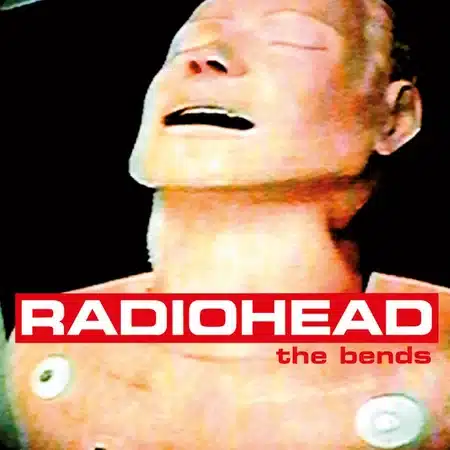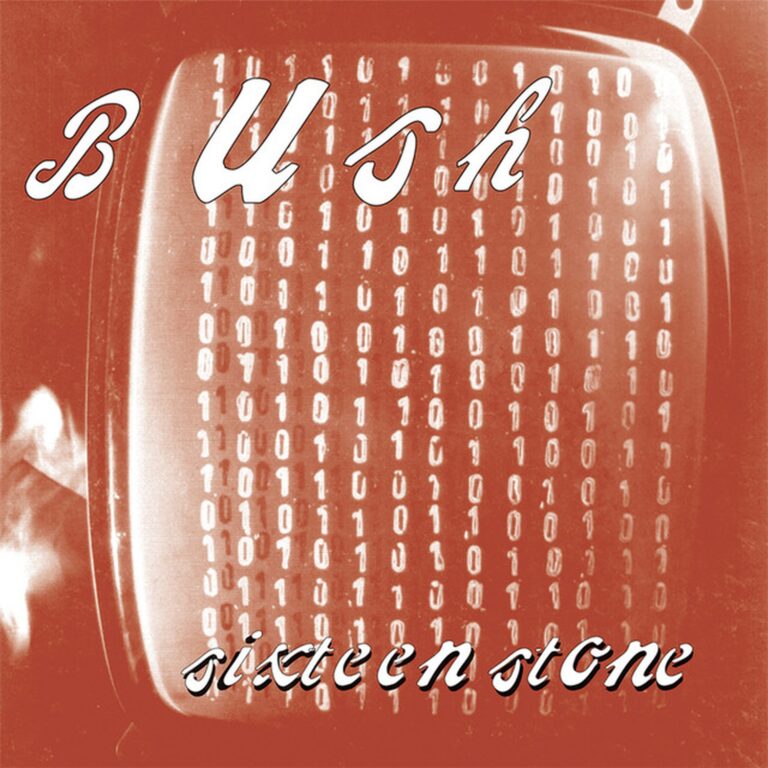
Introduction
Radiohead’s second studio album, “The Bends,” marked a pivotal moment in the band’s career. Released on March 13, 1995, in the UK, it showcased their transition from the grunge-influenced sound of their debut album, “Pablo Honey,” to a more complex and mature musical identity. This album not only solidified Radiohead’s place in the alternative rock scene but also set the stage for their future experimentation and success.
In this article, we will explore the genesis of “The Bends,” its recording process, commercial performance, and the lasting impact it has had on music and culture. We’ll delve into the album’s tracklist, themes, and the promotional efforts that helped it gain recognition. Additionally, we’ll discuss the influences that shaped the album and its legacy in the music industry.
| Attribute | Details |
|---|---|
| Release date | March 13, 1995 (UK), April 4, 1995 (US) |
| Album title | The Bends |
| Genre | Alternative rock, indie rock, Britpop |
| Total runtime | 48:33 |
| Number of tracks | 12 |
| Record label | Parlophone (UK), Capitol Records (US) |
| Recording studio | RAK Studios, London; Abbey Road Studios; The Manor, Oxfordshire |
| Producer(s) | John Leckie, with contributions from Radiohead, Nigel Godrich, and Jim Warren |
“The Bends” received critical acclaim upon its release, with many praising its emotional depth and musical complexity. It reached number four on the UK Albums Chart and was certified quadruple platinum in the UK and platinum in the US. The album’s enduring significance is evident in its influence on artists such as Coldplay, Muse, and Travis. As Thom Yorke once said, “This album was a reflection of where we were at the time, both musically and personally.”
Why not check out our podcast episode on OK Computer?
The blogs on this site are often used as the basis for podcast episodes where we dive deep and discuss the albums, memories, people and what was happening at the time.
The Genesis of “The Bends”
In the early 1990s, the music landscape was dominated by grunge and alternative rock. Radiohead’s debut album, “Pablo Honey,” released in 1993, was heavily influenced by this trend. However, the band was eager to evolve and distance themselves from the shadow of their hit single “Creep.” This desire for growth and change set the stage for “The Bends.”
Before “The Bends,” Radiohead was primarily known for “Creep,” which had become both a blessing and a curse. The pressure to replicate its success weighed heavily on the band. Nonetheless, they embraced the challenge, drawing inspiration from personal experiences and the world around them. This album marked a shift towards more introspective and intricate songwriting.
The creative forces behind “The Bends” included the band’s core members: Thom Yorke (vocals, guitar, piano), Jonny Greenwood (guitar, organ, synthesizer), Ed O’Brien (guitar, vocals), Colin Greenwood (bass), and Philip Selway (drums). Additional musicians, such as Caroline Lavelle on cello and John Matthias on viola and violin, contributed to the album’s rich sound.
| Band Member | Instrument/Role |
|---|---|
| Thom Yorke | Vocals, guitar, piano |
| Jonny Greenwood | Guitar, organ, synthesizer |
| Ed O’Brien | Guitar, vocals |
| Colin Greenwood | Bass |
| Philip Selway | Drums |
The recording costs for “The Bends” were financed by the band’s label, Parlophone. The album’s budget was substantial, reflecting the label’s confidence in Radiohead’s potential. However, the band faced financial challenges, as they struggled to meet the high expectations set by their debut.
The album’s title, “The Bends,” refers to decompression sickness, a condition experienced by divers who ascend too quickly. This metaphor captured the band’s feelings of pressure and rapid change. The album artwork, designed by Stanley Donwood and Thom Yorke, featured a distorted image of a plastic mannequin, symbolising the artificiality and alienation explored in the album’s themes.
Recording Process
The recording of “The Bends” was a complex and challenging process. The sessions began in February 1994 at RAK Studios in London. The band also recorded at Abbey Road Studios and The Manor in Oxfordshire. These iconic studios provided the perfect backdrop for the album’s creation, offering a blend of state-of-the-art equipment and historical significance.
Key personnel involved in the recording process included producers John Leckie, Nigel Godrich, and Jim Warren. John Leckie, known for his work with The Stone Roses and Pink Floyd, brought a wealth of experience to the project. Nigel Godrich, who would later become Radiohead’s longtime producer, contributed his expertise in mixing and engineering.
The recording sessions were marked by experimentation and innovation. The band utilised a range of equipment, including the Eventide Omnipressor, Lisson Grove R-124, Spectrasonics 610 Complimiter, and Pultec EQH-2. These tools helped shape the album’s distinctive sound, characterised by its dynamic range and emotional intensity.
| Hardware | Description |
|---|---|
| Eventide Omnipressor | Dynamic range compressor |
| Lisson Grove R-124 | Vintage tube compressor |
| Spectrasonics 610 Complimiter | Compressor/limiter |
| Pultec EQH-2 | Equaliser |
One of the challenges faced during the recording process was capturing the raw energy and emotion of the band’s live performances. To achieve this, several tracks were recorded live, including “My Iron Lung.” This approach added authenticity and depth to the album, allowing listeners to experience the band’s true essence.
Now, let’s take a look at other albums produced by John Leckie:
| Producer | Artist | Album | Year |
|---|---|---|---|
| John Leckie | The Stone Roses | The Stone Roses | 1989 |
| John Leckie | Muse | Showbiz | 1999 |
| John Leckie | The Verve | A Storm in Heaven | 1993 |
Commercial Performance and Reception
Upon its release, “The Bends” was met with critical acclaim and commercial success. The album reached number four on the UK Albums Chart and was certified quadruple platinum in the UK. In the US, it achieved platinum status, solidifying Radiohead’s presence in the global music scene.
Let’s take a closer look at Radiohead’s discography and where “The Bends” fits in:
| Album | Year | Sales Data |
|---|---|---|
| Pablo Honey | 1993 | 553,000 (UK) |
| The Bends | 1995 | 1,100,000 (UK) |
| OK Computer | 1997 | 1,350,000 (UK) |
| Kid A | 2000 | 404,000 (UK) |
| Amnesiac | 2001 | 279,000 (UK) |
| Hail to the Thief | 2003 | 329,000 (UK) |
“The Bends” received numerous accolades, including a nomination for Best British Album at the Brit Awards 1996. It has since been frequently listed among the greatest albums of all time by various publications, further cementing its status as a classic.
In 1995, several other notable albums were released by similar artists, including:
- To Bring You My Love by PJ Harvey
- Different Class by Pulp
- (What’s the Story) Morning Glory? by Oasis
- Garbage by Garbage
The year 1995 was a significant one for heavy music, with key events such as the formation of bands like Slipknot and Arch Enemy. It was also a year marked by the release of influential albums like Astro-Creep: 2000 by White Zombie and Symbolic by Death.
Track Analysis
“The Bends” features a diverse range of tracks, each contributing to the album’s rich tapestry of sound and emotion. Several singles were released from the album, including “My Iron Lung,” “High and Dry,” “Fake Plastic Trees,” “Just,” and “Street Spirit (Fade Out).” These singles showcased the band’s evolving sound and lyrical depth.
Below is a table of the album’s tracks, their lengths, and writing credits:
| Track Name | Length | Writing Credit |
|---|---|---|
| Planet Telex | 4:19 | Radiohead |
| The Bends | 4:06 | Radiohead |
| High and Dry* | 4:17 | Radiohead |
| Fake Plastic Trees* | 4:50 | Radiohead |
| Bones | 3:09 | Radiohead |
| (Nice Dream) | 3:53 | Radiohead |
| Just* | 3:54 | Radiohead |
| My Iron Lung* | 4:36 | Radiohead |
| Bullet Proof … I Wish I Was | 3:28 | Radiohead |
| Black Star | 4:07 | Radiohead |
| Sulk | 3:42 | Radiohead |
| Street Spirit (Fade Out)* | 4:12 | Radiohead |
Note: Songs marked with * were released as singles. “High and Dry” reached number 17 on the UK Singles Chart, “Fake Plastic Trees” peaked at number 20, “Just” at number 19, “My Iron Lung” at number 23, and “Street Spirit (Fade Out)” at number 5.
Song Meaning and Lyrics
The lyrics and themes of “The Bends” delve into the complexities of human emotion, societal pressures, and the quest for authenticity. The singles from the album, including “My Iron Lung,” “High and Dry,” “Fake Plastic Trees,” “Just,” and “Street Spirit (Fade Out),” each explore different facets of these themes.
“My Iron Lung” serves as a critique of the band’s own success with “Creep,” highlighting the constraints of fame and the desire for creative freedom. The song’s lyrics convey a sense of frustration and existential angst, reflecting the band’s struggles with their identity. As Thom Yorke once explained, “It was about being trapped, feeling like you’re in an iron lung.”
“High and Dry” explores themes of vulnerability and the search for recognition. The song’s lyrics express a plea for emotional support, capturing the fear of failure and the pressure to conform. According to Yorke, “It’s about the desire to be something you’re not and the consequences that come with it.”
“Fake Plastic Trees” is a poignant critique of modern superficiality and the emotional toll of living in a world filled with pretense. The song’s imagery of artificiality underscores the futility of seeking authenticity in a fabricated environment. Yorke described it as “a song about everything that’s fake and plastic in the world.”
“Just” tackles themes of narcissism and self-destruction, with lyrics that critique the pressures of society and the struggle for personal identity. The song’s dynamic energy and intricate guitar work reflect the intensity of these themes. Yorke noted that “it’s about someone who’s so self-absorbed that they don’t realise they’re their own worst enemy.”
“Street Spirit (Fade Out)” stands out as a haunting meditation on despair and hopelessness. The song’s lyrics evoke a sense of inevitability and resignation, capturing the emotional weight of life’s struggles. Yorke once remarked, “It’s our purest song, a dark tunnel without light at the end.”
Touring and Promotion of The Bends
The promotion of “The Bends” was a multifaceted effort, encompassing music videos, singles, and live performances. The band released several visually striking music videos for singles like “Just” and “Street Spirit (Fade Out),” which helped elevate the album’s profile and reach a wider audience.
Radiohead embarked on an extensive tour to support “The Bends,” performing over 178 shows across various countries in 1995. The tour included notable performances in the UK, US, Canada, Japan, and Europe, allowing the band to connect with fans worldwide and showcase their evolving sound.
During the tour, Radiohead shared the stage with artists such as R.E.M. and Alanis Morissette, further expanding their audience and solidifying their reputation as a formidable live act. The tour was not without its challenges, as the band navigated the demands of life on the road while continuing to hone their craft.
Influences and Legacy
“The Bends” was shaped by a variety of musical influences, ranging from alternative rock to Britpop. Artists such as R.E.M., The Smiths, and U2 played a significant role in shaping the album’s sound and themes. The band’s willingness to experiment and push boundaries set the stage for their future work.
The album’s impact on the music industry is undeniable, influencing a new generation of artists and bands. Acts such as Coldplay, Muse, and Travis have cited “The Bends” as a major influence on their own music, demonstrating the album’s lasting legacy and relevance.
| Influences on “The Bends” | Artists Influenced by “The Bends” |
|---|---|
| R.E.M. | Coldplay |
| The Smiths | Muse |
| U2 | Travis |
Released in 1995, “The Bends” coincided with a year filled with significant cultural and global events. The Oklahoma City bombing and the release of the film “Toy Story” were among the year’s notable occurrences. In the UK, the Britpop movement was in full swing, with bands like Oasis and Blur dominating the charts.
Five Things about The Bends
“The Bends” is an album filled with fascinating stories and facts. Here are five interesting tidbits about this iconic release:
| Fact | Details |
|---|---|
| Live Recording | “My Iron Lung” was recorded live during a 1994 concert in London. |
| Artwork Collaboration | The album artwork was designed by Stanley Donwood and Thom Yorke. |
| Influential Producer | John Leckie, known for his work with The Stone Roses, produced the album. |
| Chart Success | “Street Spirit (Fade Out)” reached number 5 on the UK Singles Chart. |
| Cultural Impact | The album is credited with influencing artists like Coldplay and Muse. |
Media and Television Usage
While exploring the cultural impact of “The Bends,” I sought to uncover instances of its songs being featured in media. Unfortunately, I was unable to find any specific uses of songs from this album in movies or TV shows. If you know of any, please let us know.
Critical Reviews and Retrospectives
“The Bends” has been the subject of numerous critical reviews and retrospectives, each highlighting the album’s significance and impact. Critics have praised its emotional depth, musical complexity, and innovative production techniques.
Below is a table summarising some notable reviews of “The Bends”:
| Publication | Review Score | Notable Quote |
|---|---|---|
| NME | 9/10 | “A masterpiece of modern rock.” |
| Rolling Stone | 4/5 | “A defining moment in alternative rock.” |
| Pitchfork | 9.5/10 | “An album that transcends its time.” |
After The Bends
Following the release of “The Bends,” Radiohead’s career trajectory continued to rise. The album’s success paved the way for their next release, “OK Computer,” which would become a landmark in the band’s discography and a defining moment in music history.
As the band’s popularity grew, they embraced a more experimental approach to their music, incorporating electronic elements and exploring new sonic landscapes. This evolution was evident in subsequent albums like “Kid A” and “Amnesiac.”
As of 2025, Radiohead remains an influential force in the music industry. The band members have pursued solo projects, and their collective work continues to inspire artists and fans alike. Their commitment to pushing boundaries and challenging conventions has solidified their legacy as pioneers of alternative rock.
Conclusion
“The Bends” remains a timeless classic, resonating with listeners and influencing countless artists. Its exploration of themes such as alienation, authenticity, and emotional struggle continues to captivate audiences. The album’s lasting impact on music and culture is a testament to Radiohead’s artistry and vision.
As we reflect on the legacy of “The Bends,” it’s clear that Radiohead’s willingness to innovate and take risks has been instrumental in their enduring success. The album’s relevance today is a testament to its timeless appeal and the band’s ability to connect with audiences on a profound level.
Further Reading
For more insights into Radiohead’s work and similar genres, check out our previous blogs and podcast articles:
- Radiohead – OK Computer (Blog Article)
- Radiohead – OK Computer (Podcast Episode)
- The Smashing Pumpkins – Mellon Collie and the Infinite Sadness (Blog Article)
- Soundgarden – Superunknown (Blog Article)
For additional information, visit the Wikipedia page for “The Bends”, the official Radiohead website, and the record label’s website.
Let us know in the comments what your thoughts are on The Bends by Radiohead. Did we miss anything? Share your experiences and join the conversation!



